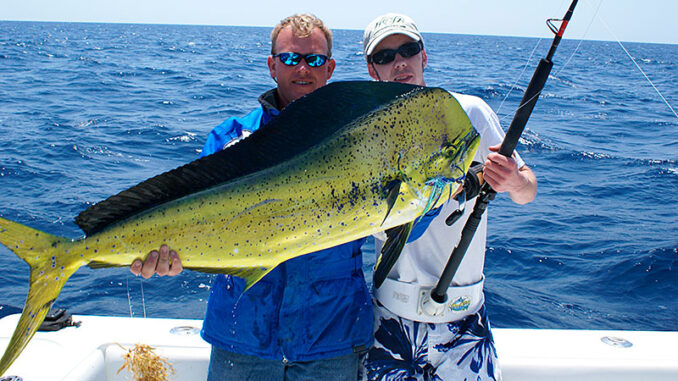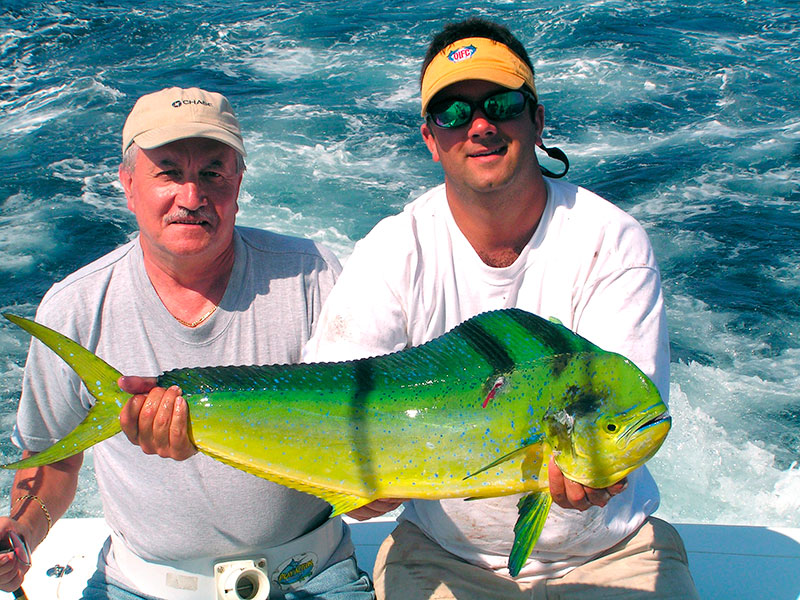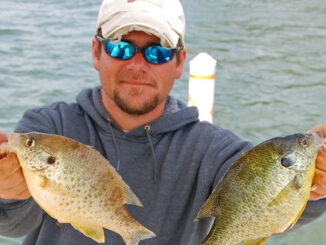
I have served on the South Atlantic Fishery Management Council’s Dolphin/Wahoo Advisory Panel since 2011. Due to term limits, my time is almost up.
I will present the November 2023 Dolphin/Wahoo Report to the Council Members on Dec. 5, 2023, and then I get to retire from this position.
I’m currently the chair of the Advisory Panel, while Capt. Jon Reynolds, out of Islamorada, Florida is the vice chair. Reynolds is on the water almost every day in the Florida Keys. He runs a first-class charter operation, and he knows what he is talking about. He and I have had (vastly) differing opinions on the state of the dolphin fishery in the past, but I do respect what he has to say.
I’ve come to realize that his opinions come from what he sees in his part of the ocean, just like mine are rooted in the Carolinas. While we are ultimately chasing the same stock of fish, the differences between the regions are vast. We are all also witnessing changes to a very historically important fishery.
South Florida fishermen live in a region where dolphin have always been readily available. The proximity of the coastline to Gulf Stream-like waters, not to mention places where dolphin MUST pass through on their way north (the Straits of Florida) made South Florida one of the best places on planet earth to target a dolphinfish and have success.
Year-round
Anglers can catch them just about every month of the year with some regularity there, with the usual peaks in spring and summer. Of course, here in the Carolinas, targeting dolphin requires much longer runs in a much tighter season.
Tiny center consoles and bay boats regularly score dolphin catches out of Palm Beach, Miami, and the Keys. It’s not impossible to replicate that here at home, but you don’t want to try it often. By and large, Florida anglers don’t have to put forth the same amount of effort or investment that ones in the Carolinas have just gotten used to.
Florida annually reports about 66 percent of the dolphin caught in the Atlantic states, and the Carolinas report about 23 percent, making these states the most statistically significant ones when it comes to dolphin catches, by far.
It’s no secret that the dolphin catch in Florida is declining lately. Charter boats have reported fewer and fewer, and the average size of the fish caught keeps diminishing as well. I can confirm that my trip to the Keys this spring resulted in a few caught dolphin, but nothing of keeper size.
Florida was the first state to institute a minimum size on dolphin. South Carolina and Georgia followed suit. North Carolina was the first state to institute a bag limit on dolphin, which is now commonplace.
North Carolina has fought long and hard against a minimum size limit, citing the merits of preserving the historical bailer fishery, which sustains the charter fleet through the summer. North Carolina had good gaffer fishing in the spring of 2023, but the bailer season was a step back from 2022. So, what’s the point of all of this?
Reynolds is a big proponent of the theory that commercial pressure is ruining dolphin fishing. I think his reasoning has some merit, but I disagree that domestic longliners are the cause of the problem.
All told, the commercial industry gets a mere 7 percent of the entire Annual Catch Limit for the dolphin fishery in the Atlantic. That’s it. When they hit their sector’s portion of the ACL, the fishery is shut down for the rest of the year.
The recreational sector of the dolphin fishery has never been shut down before. The commercial sector has. The United States has the most restrictive commercial fisheries in the entire world.
However, I do think Reynolds has an extremely valid point when it comes to the influences of foreign commercial fisheries, which are not nearly as restrictive or policed.
Temperature is key
In what is basically the Caribbean, where the influences of island nations such as Cuba or The Bahamas can often be felt, and without a 200-mile buffer from the Exclusive Economic Zone, as is the case further up the coast, it is very easy to see where a longline fishery could have a decidedly negative impact on the local recreational catch of dolphin. There’s simply not as much ocean between landmasses down there, which has to concentrate the fish. All that said and agreed upon, something else may be causing the changes in this fishery.

This year saw record high ocean temperatures, not just in Florida, but pretty much everywhere. It also saw the ocean warm up quickly as well. Dolphin, like most fish, are pretty bad at reading charts. But they are excellent at staying in water that suits their needs. If it has the right temperature and holds bait, they stay pretty happy.
Those conditions are first found well to the south of the Carolinas and then become the norm here, as spring gets later, and summer begins. Dolphin keep working northwards, and we catch them in transit. It’s no secret that they are pushing farther and farther to the north each year, as it is now a real possibility to catch a dolphin on a summer trip out of a New England port.
It’s not just an Atlantic thing either. We saw the state record for dolphin in Maine get shattered this past summer. All the way across the country, the record in Washington State fell as well. Could it simply be that a warmer ocean is pushing the mass of the fish up the beach earlier and earlier each year?
Floridians are also complaining about other species not being in their waters as well. Has anyone recognized just how good the sailfish bite out of Morehead City and Oregon Inlet has been in recent years, lasting late into the fall? I’m not complaining one bit, but again, that degree of sailfishing is generally a Florida thing.
No easy answers
We have no simple answers when it comes to fisheries management. You are constantly balancing the preservation of a species with what we think we know, with access to the fishery and the economics of those who fish, whether for recreation or survival.
Florida has addressed the lack of catchable dolphin in their own waters at the state level with a bag limit reduction. But this measure does not apply to federal waters.
We see a great deal of resistance to a bag limit reduction in North Carolina, and this makes total sense when you consider the effect it would have on the charter boat industry.
Now we are having to consider measures to preserve dolphin and dolphin fishing in areas where this species was never caught before.
It is also a very real possibility that diminishing fishing in Florida has more to do with a change in this species’ habits than angler pressure in the first place. At the very least, I think it’s worth the dialog. I’ll do my best with my limited time as “part of the process,” but these questions will continue to be debated long after my term is up.




Be the first to comment